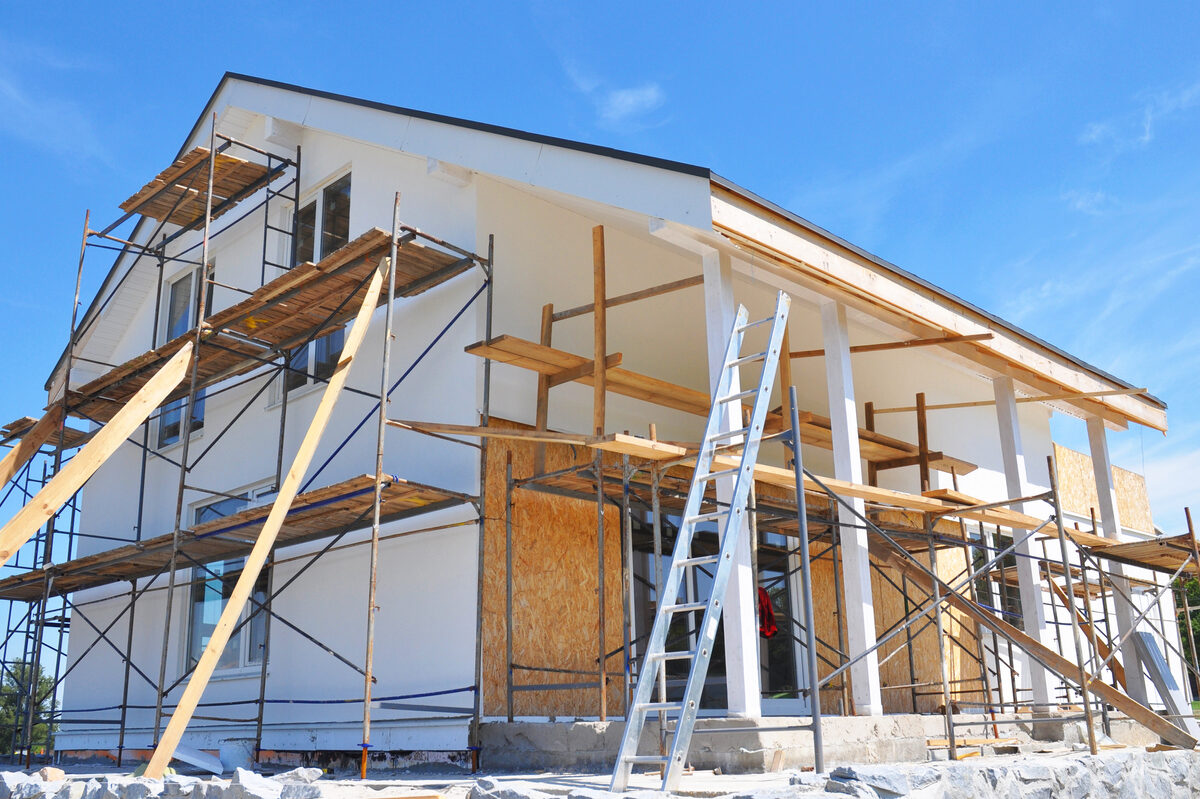We may earn revenue from the products available on this page and participate in affiliate programs. Learn More ›
Energy-efficient home improvement projects and upgrades can save you hundreds, if not thousands, of dollars when you file your taxes next year. But before you break ground, make sure you’re prepared. Knowing what receipts and documentation you need to stash away for tax season and what forms to fill out when you go to file your taxes is key to getting the most out of your home improvement project and ensuring you can back it up should Uncle Sam come calling with questions.
Home Improvements vs. Maintenance and Repairs
Unless you use your home for business, maintenance and repairs, such as fixing a leaky roof, repairing plumbing, or servicing an AC unit aren’t tax deductible. Some home improvements, like an energy-efficient HVAC system installation, a kitchen remodel, or new solar system are.
Energy efficiency upgrades qualify for immediate tax credits, while a project that adds to the value of your home substantially, such as adding a bedroom, can help reduce your capital gains tax further down the road when you sell the home. Check with the IRS to see if your project qualifies.

Tax Credits vs. Deductions
Understanding the difference between tax credits and deductions is important when determining how much your home improvement project will impact your taxes. Tax credits directly reduce the amount of money you owe the IRS.
For example, if you’ve earned a $3,000 tax credit for qualifying energy efficiency upgrades to your home, that means you get to subtract that amount from your tax bill.
Tax deductions, in comparison, lower your taxable income, which in turn decreases the amount you owe the IRS. Just how much you’ll save depends on your tax rate.

How to Organize Home Improvement Expenses for Taxes
The key to getting the most tax savings out of your qualifying home improvement expenses is to keep thorough and well-organized records, including all documentation and receipts from your projects. You also need to know what forms to use to claim these credits or deductions come tax time. The following basic steps will help you through the process.
STEP 1: Keep your receipts.
As you embark on your home improvement project, make sure you keep good records. Hold on to invoices, receipts, canceled checks, and any other documentation of what you paid for your project.
“To claim credits and deductions for home improvement expenses on your tax return, it’s crucial to have proof of all the steps you’ve taken,” says Armine Alajian, CPA and founder of Alajian Group. “Make sure to hang on to your receipts, invoices, and any documentation that verifies the costs your project incurred.”
You should keep these documents for at least 3 years after you file your taxes in case the IRS requests verification of these expenses.
Alajian points out that you should also hold on to records of other large capital improvements to your home. While you won’t be able to claim them while you’re living in your home, you can use them to save you money on taxes when you sell.
“Capital improvements, such as adding a room, add to the value of your home, but can’t be deducted until you sell your house,” she says. “Keep records of these, and they may help you save money on capital gains tax when you sell.”
STEP 2: Gather certifications and inspection reports.
If you’re claiming energy efficiency credits, Johan Garcia, certified public accountant and founder of After Tax Cash, says it’s crucial that you have documentation that proves it meets the IRS’ energy efficiency criteria. These can come in the form of inspections and certifications, he says.
For example, if you’re taking a tax credit for an energy efficient heat pump, you’ll need documentation that shows it’s an Energy Star rated appliance with an Energy Efficiency Rating (EER) that meets or exceeds the IRS’ requirements.
“Most contractors or sellers of energy-efficient home products are aware and should provide you with adequate documentation, but if not, remember to ask for them,” Garcia says.

STEP 3: Organize your records.
Of course, those records won’t help you if you can’t find them when it comes time to file your taxes. “Don’t wait until tax time to sort everything out and then expect that you’ll be able to remember in detail every expense from a project you may have done months earlier,” Alajian says. She recommends storing all contracts, receipts, and invoices for a single project in one place, such as a manila envelope.
“Sometimes, it’s helpful to jot some notes on the receipts so you’ll remember which expense the receipt was connected to,” she says. Alajian also recommends storing documents and receipts digitally, something you can do with a smartphone camera, to simplify record keeping.
STEP 4: Use the right forms.
When it comes time to file your taxes, you’ll need to use specific tax forms to claim deductions for home improvements. Unless you own a business that you run out of your home, the only tax credits or deductions available to you are for energy efficiency.
To take these energy-efficient home improvements, you’ll need to use IRS Form 5695. “IRS Form 5695 will help homeowners determine the credit amount for qualifying energy-efficient improvements, such as solar panels, geothermal heat pumps, and wind turbines,” Garcia says.
If you are taking a home office tax deduction, you might be able to deduct a portion of maintenance, repairs, and home improvements you completed in your home during the year. You’ll need to use form 8829, Expenses for Business Use of Your Home, to do so.
Final Thoughts
The easiest way to prep for the tax savings you can reap on home upgrades is to start during the planning phase. If you need to replace an old AC unit, windows, or add insulation, consider going with appliances or materials that qualify for tax credits. If you hire someone to handle the work, make sure they supply you with the certifications and appraisals you’ll need for taxes. Once you begin the project, collect all receipts, invoices, and other payment documentation and organize them in a file you can easily find when April rolls around.


